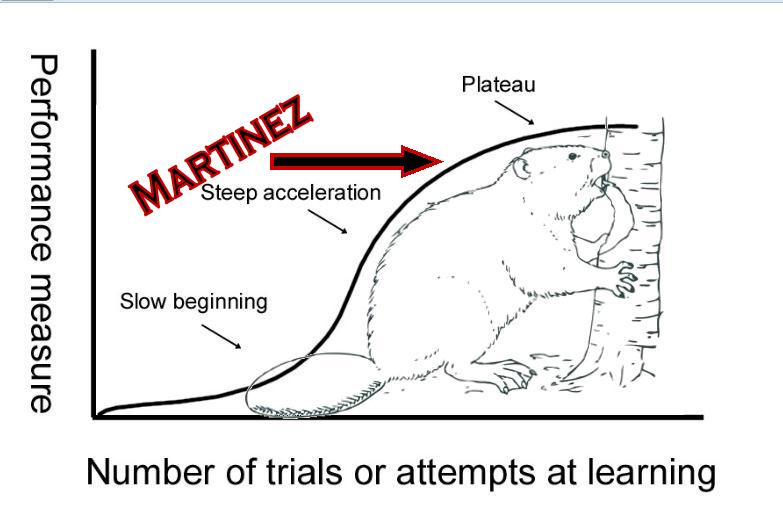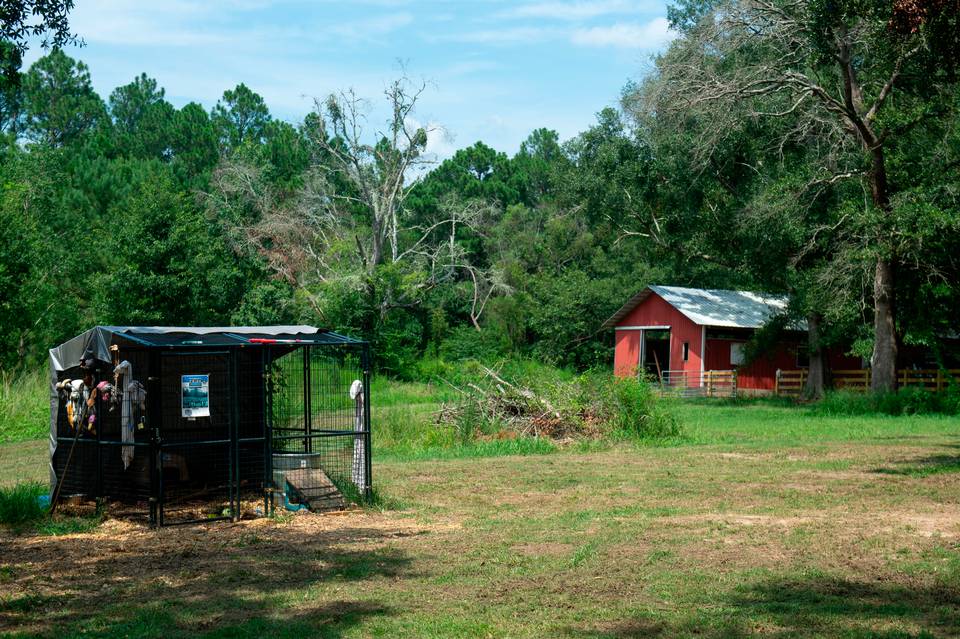 Sometimes I read a murky article about beavers from someplace like Washington or Utah and I’m frustrated because they, of all places, should know better. And sometimes I see an article like this from MISSISSIPPI and am over the moon.
Sometimes I read a murky article about beavers from someplace like Washington or Utah and I’m frustrated because they, of all places, should know better. And sometimes I see an article like this from MISSISSIPPI and am over the moon.
Because we’re grading on a beaver curve.
Are they a nuisance or key to our health? Coast scientist supports misunderstood species
During a torrential rainstorm in April, Stormy Rose was washed through Biloxi’s storm drainage. Eventually, she wandered under the shining lights of the Beau Rivage. A casino employee spotted her red fur coat and wide, dark tail and called Woodside Wildlife Rescue.
 Soon after, Stormy arrived at the home of Holley Muraco, a marine mammal scientist and research professor at Mississippi State University. The beaver was in bad shape – her spine rose out of her fur in a sign of malnutrition.
Soon after, Stormy arrived at the home of Holley Muraco, a marine mammal scientist and research professor at Mississippi State University. The beaver was in bad shape – her spine rose out of her fur in a sign of malnutrition.
“There was nothing specifically wrong with her that I could find from a veterinary perspective, but by studying her over time, I realized she actually had this incredibly rare, weird, protozoa parasite that she should not have had,” Muraco said. “… She got this parasite, because it’s in our environment, and most likely, was spread through wild hogs.
Muraco’s research takes a “One Health” approach, a relatively new scientific perspective that recognizes that the health of humans and animals is connected through our shared environment. Once Muraco confirms the presence of the parasite, she will publish papers asserting that beavers could be “sentinels” for human health. Essentially, if beavers are sick, it could act as a warning for similar diseases in people.
Now that’s interesting. I’m not sure beavers are a great indicator species for humans because they tolerate way more than we ever could. But they also, as we know in Martinez, are sensitive in ways we are not.
 Across the past few months, Muraco has constructed a special needs enclosure for young and recovering beavers, complete with personal pools. When they are mature and strong enough, future beavers will be released into a fenced, three-acre area, where Muraco can encourage the development of healthy, wild behaviors. Muraco said beaver rehabilitation takes about two years.
Across the past few months, Muraco has constructed a special needs enclosure for young and recovering beavers, complete with personal pools. When they are mature and strong enough, future beavers will be released into a fenced, three-acre area, where Muraco can encourage the development of healthy, wild behaviors. Muraco said beaver rehabilitation takes about two years.
“While I have them in my care, I’m learning about growth and development. I’m learning about diseases, parasites, and then once we are ready to release, and I’m going to look at how they change the environment, and then behavior. There’s a lot we still don’t know about behavior,” Muraco said. “I’ve been recording her vocalizations; they vocalize underwater too.”
Muraco said that Gulf Coast beavers are seemingly unique from beavers found elsewhere in North America. They are typically smaller and have been observed in saltwater environments, which is uncommon for beavers. Muraco said Stormy is a particularly unique beaver.
“Her coat is super short; she has red fur – she just has a very different appearance than the northern beavers. I’m going to do some DNA testing and see if we actually have a genetic subspecies on our hands on the Coast,” Muraco said. “No one has ever really looked at Coastal beavers. It’s low-hanging fruit; we’re gonna have so many cool opportunities.”
Okay. There’s a lot to unpack here. First of all I love how she’s really thinking about and observing the beavers in her care. And I always assumed they verbalized underwater but haven’t generated much interest in proving it. Even Bernie Krause told me that it probably didn’t happen because sounds travel so differently in water. But good for you. Keep going.
And second of all some beavers have red coats.Or black coats. Or even blonde coats. Before we killed them all there were as many colors of beaver fur as you can imagine. Even today I know of a piebald beaver. It happens
Third of all. coastal beavers aren’t a different subspecies. And they have been studied and written about extensively. Even in Martinez our beavers lived in brackish water. Check out this article about salt water.
 Michael Niemeyer of Wildlife Solutions, Inc. has worked as a trapper in southern Alabama and Mississippi for 16 years. He works with beavers almost daily and said most conflicts he sees with beavers surround roads, where beavers clog drainage systems, or at levees, where beavers burrow holes to drain lakes and ponds. He sees more beaver activity today than he did 16 years ago.
Michael Niemeyer of Wildlife Solutions, Inc. has worked as a trapper in southern Alabama and Mississippi for 16 years. He works with beavers almost daily and said most conflicts he sees with beavers surround roads, where beavers clog drainage systems, or at levees, where beavers burrow holes to drain lakes and ponds. He sees more beaver activity today than he did 16 years ago.
Niemeyer said relocating live beavers is usually impossible. It is illegal to relocate beavers onto public land in Mississippi without permission, and few private landowners would willingly allow the relocation of a nuisance species onto their property. He said that, even if beavers were relocated to an area where beavers are already established, the resulting battle for territory would likely mean death for relocated beavers.
That’s because it is better to SOLVE a problem than MOVE a problem.
Neimeyer said that, in his experience, nonlethal mitigation efforts to control beaver damage are expensive and ineffective in the long term. He said that almost all landowners choose lethal mitigation methods and that if they continue to be significantly less expensive and more effective than non-lethal methods, Mississippi landowners are unlikely to change practices.
Gee that’s super surprising. There must not be ANY properly installed flow devices in the entire southern south. Hmm maybe we can change that.
 “And that’s where my approach with the beavers is; I just want to try to understand. I want to understand, once I start releasing these animals into my environment, exactly what is the carrying capacity of our property, and if beavers are going to exceed that carrying capacity. For example, I think people believe if you see one beaver, you’re going to have 500 beavers, but they’re not like rats or rodents. They only have the number that fits the environment that they’re in, and I want to show that. I’m going to show it with statistics and studies and say, ‘Alright, I have a breeding population of beavers in this pond, they’re only maintaining this number and they’re not going beyond what their resources are,’ Muraco said.
“And that’s where my approach with the beavers is; I just want to try to understand. I want to understand, once I start releasing these animals into my environment, exactly what is the carrying capacity of our property, and if beavers are going to exceed that carrying capacity. For example, I think people believe if you see one beaver, you’re going to have 500 beavers, but they’re not like rats or rodents. They only have the number that fits the environment that they’re in, and I want to show that. I’m going to show it with statistics and studies and say, ‘Alright, I have a breeding population of beavers in this pond, they’re only maintaining this number and they’re not going beyond what their resources are,’ Muraco said.
“By just using science, I’m hoping that then I can share that with our state and with our regulators and say, ‘Let’s put a little bit of effort into non-lethal mitigation techniques for landowners who would like to keep beavers around,’ instead of just having them labeled: kill them on sight. Maybe, just maybe, we can give them a chance – once we know a little bit more information,” Muraco said.
Your instincts are SPOT on. You just need to have access to all the great work that’s already been done and exists about beaver populations. Maybe taking a look at Ben’s book will at least introduce you to a host of scientists doing this work and you can follow up with the resources he has gathered together to start.
You are well on your way. Let me know when you are ready to plan a beaver festival in Mississippi.






































